Nadul Hanok [Korea Quality] / 나들한옥 [한국관광 품질인증]
.0M 2020-09-09
4-1, Jjoksaem-gil, Gyeongju-si, Gyeongsangbuk-do
+82-54-777-7738
Nadeul Hanok was opened in 2018 with brand-new facilities, in a location just a minute’s walk from Cheomseongdae Observatory in Gyeongju. You can feel a sense of healing in nature in the traditional style house, built in environment-friendly construction method with wood and earth. The ‘ㄷ’-shaped building creates a snug atmosphere and the hipped-and-gable roof and the curves of the roof tile show the traditional quiet and still flavor of a traditional Korean house. There are 7 rooms in Nadeul Hanok. Among them, the Garam, Gayeon, and Nuri Rooms are offered at 50,000 won for 2 persons during off-season so that visitors can enjoy staying in a traditional Korean house at more affordable prices. All rooms are equipped with a bathroom for better convenience and there is an individual thermostat all year round. Complimentary breakfast made of healthy convenience food is offered to all guests. The menu is composed of barley bread, fruit, coffee, juice, boiled egg, and biscuit, and is subject to change according to situation. What is good is that the breakfast can be delivered to the room if the delivery time is requested during breakfast time, which is from 8 to 9 AM.
It is possible to look around the tourist attractions near Nadeul Hanok on foot. In addition, there are CVs, fast food shops, bike rental shops, and hanbok rental shops adjacent to Nadeul Hanok, enabling a more convenient and joyful tour.
Hwarang Guesthouse [Korea Quality] / 화랑게스트하우스[한국관광 품질인증]
285.0M 2023-04-13
136-1, Wonhyo-ro, Gyeongju-si, Gyeongsangbuk-do
+82-10-2473-8329
Hwarang Hostel is located near Daereungwon in Gyeongju.
The three-story guest house has ten rooms in all, and there are two types of rooms - double and quad. Every room is equipped with exclusive toilet and bathroom for the user’s convenience.
The atmosphere of the lobby on the first floor is very relaxing and cozy, furnished with various kinds of books including travel guides.
Communal PC and fax, refrigerator, and washing facility are available. Daereungwon ancient tombs, Cheomseongdae observatory, and Donggung & Wolji palace site are within walking distance from the guest house.
Hwarang Hostel boasts of the best location considering the transportation and tourist destinations. You can also rent a bike for 7,000 won a day.
Hwangnam Bread (황남빵)
287.5M 2025-03-19
783, Taejong-ro, Gyeongju-si, Gyeongsangbuk-do
141MINIHOTEL [Korea Quality] / 141미니호텔 [한국관광 품질인증]
330.2M 2020-09-10
141, Wonhyo-ro, Gyeongju-si, Gyeongsangbuk-do
+82-10-9031-1628
'Located in Gyeongju, the capital of Silla Kingdom for 992 years, 141 Mini Hotel lets you enjoy hotel services at motel room rates. It has sauna, book café, small conference room, and business center for the convenience of its guests. The hotel staff are friendly as well. It's very conveniently located, since it's only 5 minutes away from Gyeongju Station and 10 minutes away from the Bus Terminal, both on foot. There are many popular tourist destinations in the vicinity of the hotel, including Donggung Palace, Wolji Pond, Cheomseongdae Observatory, and Bulguksa Temple.
Áreas Históricas de Gyeongju (경주역사유적지구) [Patrimonio Cultural de la Humanidad de la Unesco]
343.1M 2025-03-17
Taejong-ro 757, Gyeongju-si, Gyeongsangbuk-do.
Designado como Patrimonio Cultural de la Humanidad por la Unesco en noviembre del 2000, es una zona histórica que conserva toda la historia y cultura de Gyeongju, la antigua capital de Silla (57-935). Se clasifican en un total de 5 áreas históricas. La primera es la zona de Namsan, la cuna del arte budista de Silla. Considerado un museo al aire libre sin paredes, es un lugar en donde persiste el espíritu de Silla, y reúne 37 reliquias budistas; el pabellón Poseokjeong (Sitio Histórico), la roca Tapgok Maaejosanggun (Tesoro – figuras budistas grabadas en roca), la pagoda de tres pisos de piedra del templo Cheonryongsa (Tesoro), la roca Chilburam Maaeseokbul (Tesoro - figuras budistas grabadas en roca), la roca Bulgok Seokbuljwasang (Tesoro), etc. La segunda es la zona de Wolseong, sitio en donde estaban los palacios de la dinastía milenaria de Silla. Se encuentran en esta área el bosque Gyerim (Sitio Histórico), el sitio de la sala Imhaejeon, y el mejor observatorio de Asia, Cheomseongdae (Tesoro Nacional). La tercera es la zona de Daereungwon, el complejo de tumbas reales, los pertenecientes a los reyes, reinas y miembros de la nobleza. Durante su proceso de excavación se han encontrado coronas, pinturas de caballos míticos, variedad de cerámica, etc., entre otras reliquias que han servido como base de estudio histórico. La cuarta es la zona en donde se encontraba instalado el famoso templo Hwangnyongsa (Sitio Histórico). Y por último, la quinta zona, es el lugar en donde se establecía la fortaleza Myeonghwalsanseong (Sitio Histórico), que se presume que fue construido hace 400 años. Estas áreas históricas de Gyeongju, designadas como Patrimonio Cultural de la Humanidad por la Unesco, comprenden un total de 52 patrimonios culturales.
Festival de la Calle del Muro de Piedra del Parque Daereungwon en Gyeongju (경주 대릉원돌담길 축제)
351.8M 2025-03-14
Hwangnam-dong, Gyeongju-si, Gyeongsangbuk-do
054-776-5267
Wiyeonjae Hanok Stay [Korea Quality] / 위연재 [한국관광 품질인증/Korea Quality]
368.8M 2021-03-29
7, Jjoksaem-gil, Gyeongju-si, Gyeongsangbuk-do
This hanok (traditional Korean house) is located very near to Cheomseongdae Observatory. Its location in front of the Gyeongju Historic Areas allows guests to reach major sights in Gyeongju like Daereungwon Ancient Tomb Complex, Donggung Palace and Wolji Pond, and Hwangnidan-gil Street by foot. This hanok symbolizes the historicity of the city of Gyeongju in that during its construction a female skeleton and accessories made out of precious metals were excavated from the site. The accommodation’s name comes from the idiom “Muwijayeon (leaving nature as it is),” combining bamboo and pine trees with green grass, show its dedication to ideals of rest and philosophy.
There are five rooms in total, all ondol (under-the-floor heating system) rooms for two. Korean paper lining the walls and old-fashioned furniture speak to the ideal beauty of hanok. The raised floor space, which is attached to the “Munmu” room, is a great place to enjoy the scenery and take pictures. All rooms have modern bathrooms with shower facilities, and a complimentary breakfast is served in the cafe on site from 8:00 to 9:00 in the morning. The complex has abundant parking spaces for the guests.
Pyeongyang Naengmyeon (평양냉면)
443.0M 2017-01-19
109-2, Wonhyo-ro, Gyeongju-si, Gyeongsangbuk-do
+82-54-772-2448
The restaurant of Pyeongyang Naengmyeon has been operated through two generations and thus is very famous in Gyeongju. Its noodles are hand-made from starch of Korea-grown buckwheat and potato and broth is made by deeply boiling beef bones. So, noodles are chewy and broth tastes rich and clean.
Gyeongju Ssambap Street (경주 쌈밥거리)
475.4M 2025-03-19
9 Gyerim-ro, Gyeongju-si, Gyeongsangbuk-do
Alrededores del Parque Daereungwon de Gyeongju (경주 대릉원 일원)
477.1M 2025-04-25
Hyerim-ro 9, Gyeongju-si, Gyeongsangbuk-do
Los Alrededores del Parque Daereungwon de Gyeongju consta de cinco tumbas: las de Nodong-ri, Noseo-ri, Hwangnam-ri, Hwango-ri e Inwang-ri. Las tumbas se distribuyen en el barrio de Hwangnam-dong de la ciudad de Gyeongju y se ubican en las inmediaciones de Daereungwon. Dentro de Daereungwon se encuentra la Tumba Cheonmachong, excavada en 1973. Otra tumba a destacar es Hwangnamdaechong, excavada entre 1973 y 1975, las cuales son tumbas gemelas.
![Nadul Hanok [Korea Quality] / 나들한옥 [한국관광 품질인증]](http://tong.visitkorea.or.kr/cms/resource/86/2636486_image2_1.jpg)
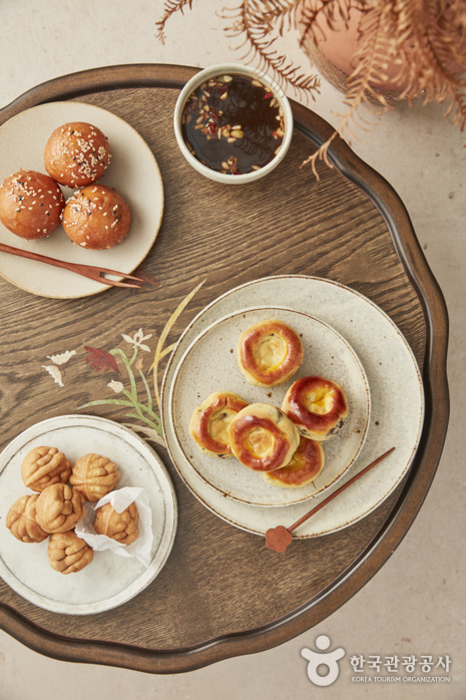
![141MINIHOTEL [Korea Quality] / 141미니호텔 [한국관광 품질인증]](http://tong.visitkorea.or.kr/cms/resource/21/2577221_image2_1.jpg)
![Áreas Históricas de Gyeongju (경주역사유적지구) [Patrimonio Cultural de la Humanidad de la Unesco]](http://tong.visitkorea.or.kr/cms/resource/03/2656603_image2_1.jpg)
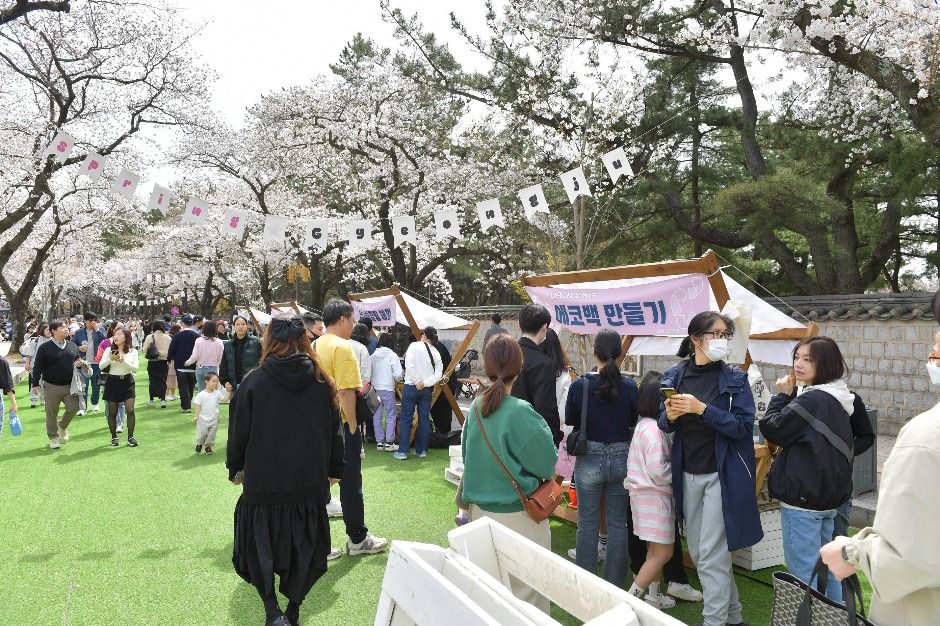
![Wiyeonjae Hanok Stay [Korea Quality] / 위연재 [한국관광 품질인증/Korea Quality]](http://tong.visitkorea.or.kr/cms/resource/51/2708951_image2_1.jpg)
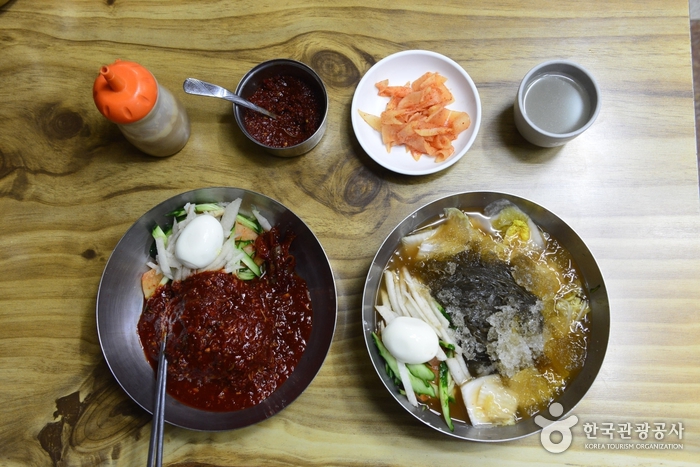
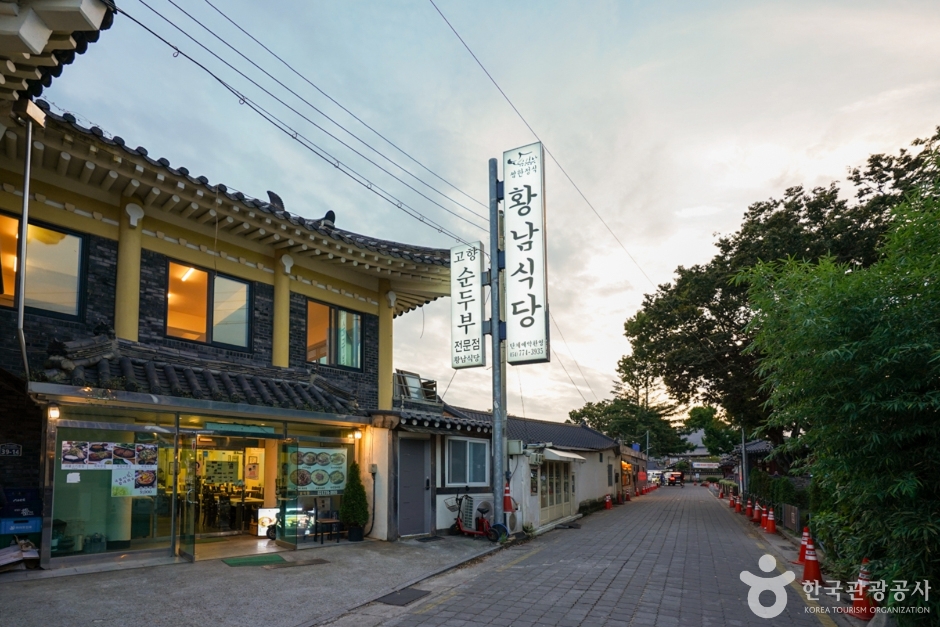
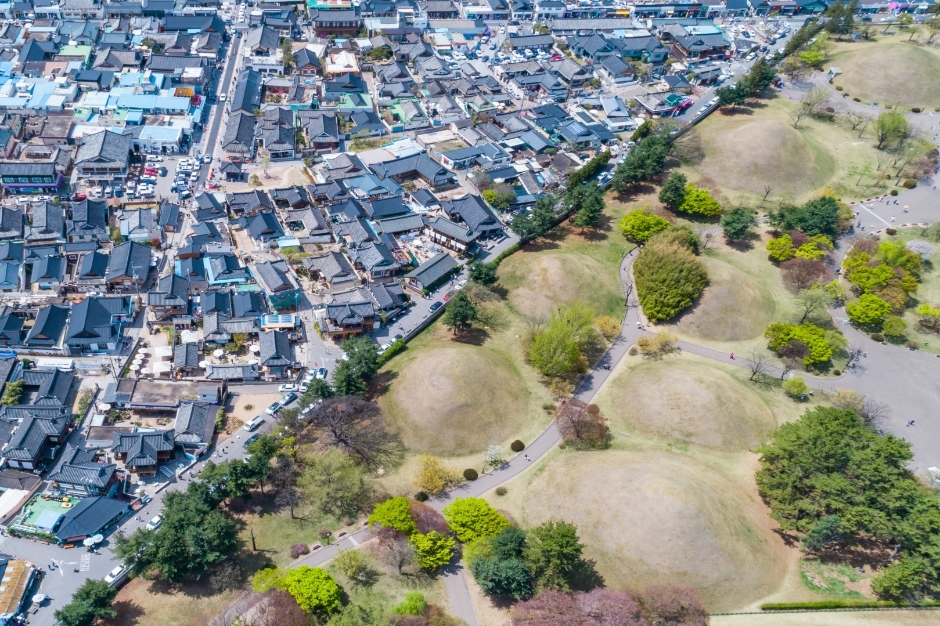
 Español
Español
 한국어
한국어 English
English 日本語
日本語 中文(简体)
中文(简体) Deutsch
Deutsch Français
Français Русский
Русский